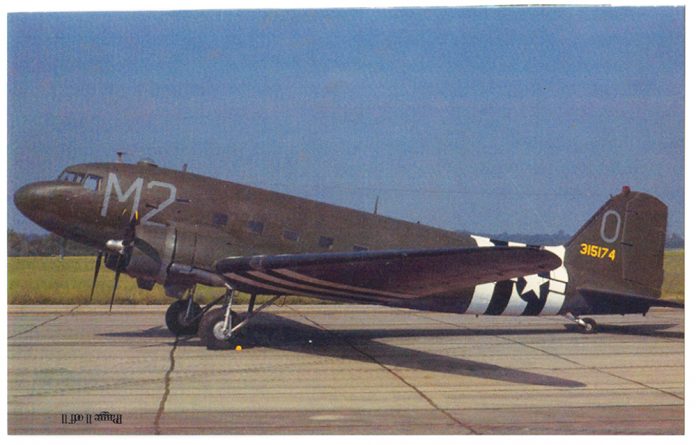It is November – time to celebrate Veterans Day. But, why on November 11? You may remember it evolved from a holiday called “Armistice Day,” which was created in remembrance of the veterans of World War I and the signing of the peace treaty ending that war. That treaty, called an “armistice,” was signed in Paris, at 11 minutes after 11 a.m., on November 11. After World War II, the name of the holiday was changed to Veterans Day and designated as a day to honor all veterans, living or dead.
I want to consider “The Big War,” a name given by many to World War II. Believe me, it was a BIG one. I must say, any war is big to those involved in it. There were 16,112,566 members of the U.S. armed forces during World War II. Some morbid facts: Only about 426,000 of us (yes, I am one) are living today, and we are dying at the rate of 362 per day. Perhaps, I had better hurry and finish this story …
Some of my friends have asked me to write of my World War II experiences, so I will begin with a little history. In 1941, Nazi Germany was destroying nations as it marched across Europe. The U.S. was doing its best to stay out of the European conflict, when, on Sunday morning of December 7, the Japanese, in a sneak attack, bombed our base at Pearl Harbor in Hawaii. The next day, December 8, 1941, U.S. Congress declared war on Japan. Japan’s allies, Germany and Italy, then declared war on the U.S., plunging us into World War II.
Like millions of Americans, our life plans immediately changed. I was a senior at Texas A&M University, ready to graduate and find a job. I did graduate, but the “job” I got was with the Army Air Corps as an aviation cadet. They taught me to fly, commissioned me as a second lieutenant and assigned me to Troop Carrier Training. There, I learned to fly big cargo planes, C-47s, primarily used to drop airborne infantry troops into enemy territory. Some were dropped as paratroopers, while others were towed to drop zones in large cargo gliders.
In June 1944, I was ordered to take a plane to Europe and join the 94th Troop Carrier Squadron, which was stationed in England. My orders were to pick up a C-47 and a crew in Ind. and fly to Europe by way of Nova Scotia, Greenland, Iceland and England. That was an adventure in itself for a 23-year-old, but we made it, joining the squadron which had, just a few days before, flown the June 6 D-Day mission, dropping paratroopers in Normandy.
There was little time to rest after the Normandy invasion. In July, the squadron got orders to go to Italy and prepare for the Southern France Invasion. The invasion itself, a successful use of paratroopers and gliders, took place in mid-August. But, while waiting for the invasion, we were called on to perform another important Troop Carrier function — medical evacuation. Our planes were loaded with wounded from the Italian front and flown to hospitals. Flight nurses tended to the wounded as we flew to places of treatment. Needless to say, medical evacuation missions were very sobering, but very necessary.
Back to our home base, Troop Carrier was called on for an entirely different mission — hauling gasoline to General Patton. His tanks had outrun their ground supply while making their run across France, so our planes were loaded with five-gallon “jerry cans” of gasoline to be taken to the latest landing area General Patton had captured. Sometimes, the landing area was only a cow pasture, but our C-47s were capable of short field landings. General Patton’s crews off-loaded the gasoline and we were on our way back for another load. General Patton gave Troop Carrier credit for allowing his tanks to keep the Germans on the run.
Our next combat mission was the invasion of Holland. It was called “Operation Market Garden” and was the largest airborne assault in history. You may have seen movies or read books about the battle. It is certainly etched in the minds of those of us who were involved. Our squadron’s part of the mission was to take airborne troops in gliders from a base in England across the English Channel to a landing zone near Nijmegen, Holland. The trip took us 70 miles over enemy territory, so we were subjected to ground fire all the way there and back.
The flight I was in was led by my squadron commander, Major Beck, and I was in formation, two planes behind the leader. Just as we approached the coast of Holland, Major Beck’s plane was hit by ground fire. He and the glider he was towing made a crash landing on the beach. All but one of the crew members survived, but were taken prisoner. Allied fighters immediately quietened the ground fire, and the flight continued to the drop zone where we dropped our gliders and “high tailed” it back to England.
In December, Troop Carrier units were called into action once more in the famous Battle of the Bulge, where our troops were surrounded by Hitler’s forces at the town of Bastogne. We dropped airborne troops and supplies to reinforce and help sustain our forces until they broke free.
March 1945 brought us to our final big combat mission, the Crossing of the Rhine. Allied units were unable to cross the Rhine River, so Troop Carrier was called on to deliver airborne troops to the German side of the river. We were ordered to tow two gliders at one time, our first-ever double-glider tow. That was a challenge for our C-47s, and we had to “mush” along at 90 mph, about half our normal cruising speed. It was a 350-mile trip to the drop zone near Wesel, Germany. We made the trip, crossed the river and released our gliders, then turned to get back across to safety, but the enemy ground fire was ferocious. Records show approximately one-third of the C-47s in the double-tow mission were destroyed. The plane ahead of me and the one following me were shot down, but, thank the Lord, my plane did not get a bullet hole.
As the allied troops fought their way across Germany, they freed many prisoners of war, and, once again, our Troop Carrier planes were called into service. We made trip after trip carrying liberated prisoners, both service men and civilians, from their places of capture to places of safety. Within a few weeks, our group, the 439th Troop Carrier Group, carried more than 15,000 freed prisoners. That was one of our more satisfying duties.
The Germans signed surrender papers on V-E Day, May 8, 1945, ending the war in Europe.
Our faithful old C-47s were traded for the much larger C-46es, and we learned to fly them. In July, we flew back to the U.S with orders to, after a 30-day leave, re-deploy to the Pacific where the war was still raging. Fortunately, the Japanese surrendered before we had to go.
World War II was over, and our troops came home to a grand welcome. Now, let’s look at what had been happening on the home front during the war.
Believe me, the home front was busy supporting the war effort in every way. Automobile production was stopped and factories were converted to the production of war materials such as tanks and Jeeps. Women shed their aprons and went to work building planes and making shells and ammunition. Others made bandages and care packages for the troops. Men past draft age left their non-essential jobs to work in factories, while older men volunteered as air raid wardens. All, even children, were encouraged to buy war bonds.
And, there was rationing. Everyone was affected, as many essential items such as gasoline, tires, shoes, sugar, flour and butter were rationed for the sake of our troops.
Unlike some of our wars, World War II was an all-out effort supported by virtually every American. It is said to have been the last war we actually won, with surrenders signed by both enemies.
We can hope and pray that we will not have wars, but the Bible tells us, in Matthew 24:6, there will be wars and rumors of wars until the end times. So …


